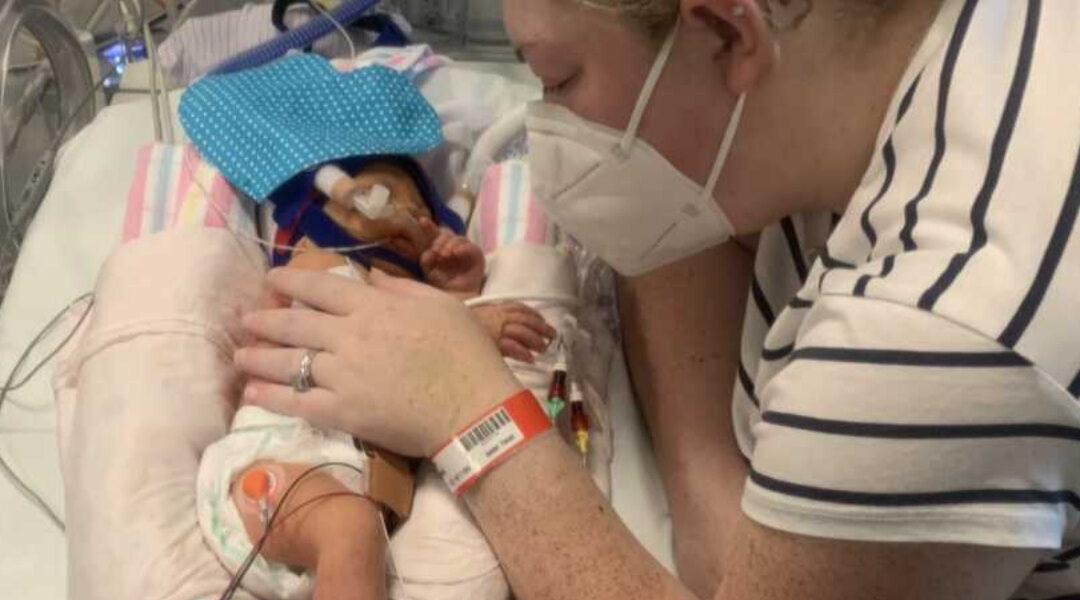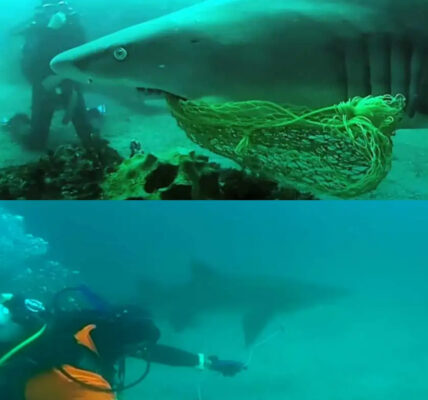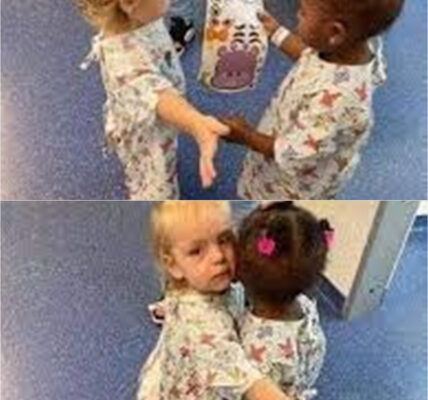When Adrienne was sixteen, doctors told her she had Endometriosis. They said getting pregnant might not come easily. Years later, those words came back to her like a shadow — one that lingered through every test, every tear, every month that ended in heartbreak. Yet she and her husband, Aaron, refused to give up.

In February 2021, they began IVF — a process of hope and heartbreak, science and prayer. There were only two viable embryos. They transferred one, and against all odds, it worked. When the test came back positive, Adrienne remembers standing in the bathroom with shaking hands, whispering, “Please, let this be the one.”
It was.
Her name would be Abigail — “Father’s Joy.”

The pregnancy was mostly normal. Adrienne battled high blood pressure, but the scans were reassuring. At twenty weeks, a doctor found a minor issue with Abigail’s heart — a small imperfection that needed monitoring but wasn’t life-threatening. They were told not to worry. “She’ll be fine,” the doctor said with a kind smile.
But as the months passed, Abigail’s growth slowed. Adrienne’s body began showing signs of strain. The doctors decided to induce labor on November 20th, 2021. After twelve hours with no progress, Abigail’s heart began to struggle. Adrienne was rushed into an emergency C-section.
And then — silence.

No cry. No sound.
Abigail was born fighting for her life. She was taken from Adrienne’s arms to the NICU, where machines breathed for her tiny lungs. She was hypoglycemic and needed a ventilator by her third day. Doctors diagnosed late-onset sepsis. For three agonizing weeks, her parents watched her fight through tubes and wires, clinging to the faint hope that she’d pull through.
On December 15th, she finally came home.

But something wasn’t right. Abigail wouldn’t eat. She slept too much. Her skin stayed cold, her weight refused to rise, her eyes dull with exhaustion. Adrienne told herself it was just recovery — that her baby had had a hard start. Christmas came and went, and she started supplementing with formula, hoping it would help.
Then came December 29th — the day their world fell apart.
Abigail had barely eaten. She cried endlessly. At 3 a.m., Adrienne sat on the couch in tears, watching her baby’s chest rise and fall, praying for a sign that everything would be okay. By morning, Abigail’s feeding worsened. That evening, while the family tried to soothe her, she suddenly went still.
Her lips turned blue.

The next moments were chaos — Aaron calling an ambulance, Adrienne sobbing, her father holding the tiny baby who had begun seizing in his arms. The paramedics arrived, finding Abigail’s blood sugar at a dangerously low level — 0.8.
As the ambulance sped through the night, Abigail became unresponsive. The hospital issued a code blue. Adrienne’s world froze. When they arrived, twenty doctors rushed around her baby’s lifeless body, cutting away her clothes, drilling into her tiny bones to start an IV. Adrienne stood there, trembling, whispering, “Please, wake up. Please.”
By midnight, Abigail was on life support and transferred to Sydney Children’s Hospital. She was hypothermic, hypoglycemic, and in organ failure. Doctors warned she might not make it through the night. Her pupils were fixed and dilated.
But Abigail wasn’t ready to leave.

Days passed in a blur of machines, prayers, and exhaustion. On New Year’s Eve, Adrienne and Aaron called the ICU at midnight and asked the nurse to put the phone to Abigail’s ear. “Happy New Year, sweetheart,” they whispered through tears. “Please come back to us.”
And somehow, she did.
In early January, Abigail began responding to voices. Her hands twitched. Her eyes flickered. By mid-month, she was moving and turning her head toward the sound of her name. The doctors ordered another MRI — and that’s when they finally found the answer.

Abigail had Hypopituitarism, a rare condition in which the pituitary gland fails to produce essential hormones like cortisol, growth hormone, and thyroid hormone. The crisis that almost took her life was due to Adrenal Insufficiency — her body couldn’t produce cortisol, the hormone that helps humans survive stress.
Without cortisol, even a simple cold could kill her.

Adrienne and Aaron spent the following weeks learning how to save their daughter’s life. They learned how to inject hydrocortisone in emergencies, how to monitor stress dosing, how to give daily growth hormones, and how to recognize the signs of another crisis. Their days revolved around numbers, doses, and prayers.
Every night, Adrienne held Abigail close as she prepared the needle for her growth hormone shot. “I’m sorry, my love,” she’d whisper, tears falling on her daughter’s soft skin. “This is to help you grow. Mommy’s here. Always.”

To the world, Abigail looks like any other child now — small, smiling, with a sparkle in her eyes. But behind every giggle is a battle quietly fought, a miracle sustained by love, medicine, and faith.
Her parents never got the newborn months they dreamed of. The first smiles happened under fluorescent hospital lights, the first lullabies sung beside machines that beeped in rhythm with her fragile heartbeat. But they got something even more precious — time.

Time to hold her, love her, and witness her strength.
They call her their miracle — not because she was born through science, but because she chose to stay. Against every odd, against every dark hour, Abigail lived.
And every day since, she’s reminded them what hope looks like in its purest form.





